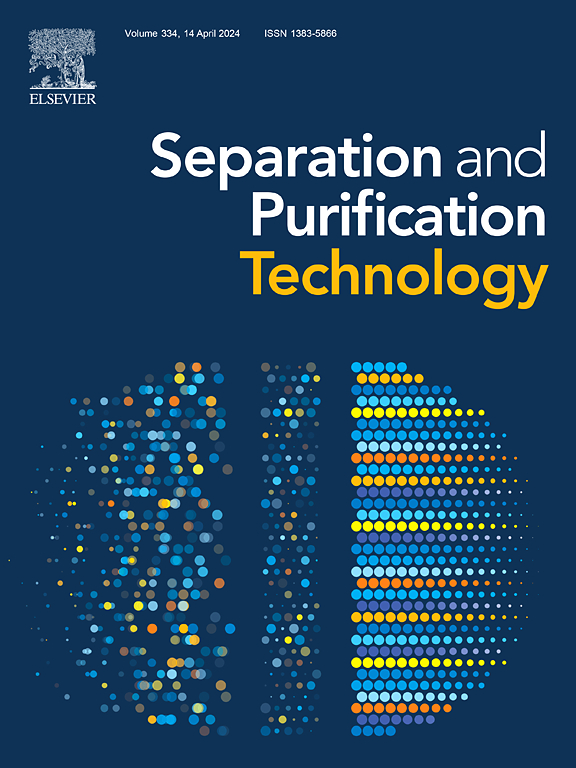Radiolytic degradation of pentachlorophenol by radiation combined with TiO2 nanoparticles
IF 8.1
1区 工程技术
Q1 ENGINEERING, CHEMICAL
引用次数: 0
Abstract
This study investigated the synergistic degradation of pentachlorophenol (PCP) in aqueous solutions using gamma radiation combined with titanium dioxide (TiO2) nanoparticles, focusing on the optimization of influencing parameters through response surface methodology (RSM). PCP decomposition achieved 99 % by radiation alone at 6.5 kGy, while the low mineralization ratio highlighted the persistence of intermediate products. The introduction of TiO2 nanoparticles increased the mineralization efficiency by 1.36 times (from 25 % to 59 %), and dechlorination efficiency rose from 75 % to 95 %. A Box-Behnken design (BBD) identified absorbed dose (X2) exerts the most significant influence on all response variables, underscoring the central role of radiolytic degradation in the process. Response surface analysis also delineated an optimal operational window (X1: 20–30 mg/L; X2: 2.5–3.0 kGy; X3: 0.6–0.8 g/L), achieving balanced efficiency (degradation > 85 %, mineralization > 35 %, and dechlorination > 70 %). These findings indicated that the combination of radiation with TiO2 nanoparticles is effective to enhance the degradation and mineralization of recalcitrant organic pollutants in wastewater treatment applications.


纳米TiO2复合辐射降解五氯苯酚的研究
本文研究了伽马辐射与二氧化钛纳米粒子协同降解水溶液中五氯酚(PCP)的作用,重点研究了响应面法(RSM)对影响参数的优化。在6.5 kGy的辐射下,PCP分解率达到99% %,而低矿化率突出了中间产物的持久性。TiO2纳米粒子的引入使矿化效率提高了1.36倍(从25 %提高到59 %),脱氯效率从75 %提高到95 %。Box-Behnken设计(BBD)确定了吸收剂量(X2)对所有响应变量的影响最为显著,强调了辐射降解在该过程中的核心作用。响应面分析也划定了最佳操作窗口(X1: 20-30 mg/L;X2: 2.5 - -3.0 kGy的;X3: 0.6 - -0.8 g / L),实现平衡效率(退化 祝辞 85 %,矿化 祝辞 35 %和脱氯 祝辞 70 %)。这些结果表明,在废水处理应用中,辐射与TiO2纳米粒子的结合可以有效地增强对顽固性有机污染物的降解和矿化。
本文章由计算机程序翻译,如有差异,请以英文原文为准。
求助全文
约1分钟内获得全文
求助全文
来源期刊

Separation and Purification Technology
工程技术-工程:化工
CiteScore
14.00
自引率
12.80%
发文量
2347
审稿时长
43 days
期刊介绍:
Separation and Purification Technology is a premier journal committed to sharing innovative methods for separation and purification in chemical and environmental engineering, encompassing both homogeneous solutions and heterogeneous mixtures. Our scope includes the separation and/or purification of liquids, vapors, and gases, as well as carbon capture and separation techniques. However, it's important to note that methods solely intended for analytical purposes are not within the scope of the journal. Additionally, disciplines such as soil science, polymer science, and metallurgy fall outside the purview of Separation and Purification Technology. Join us in advancing the field of separation and purification methods for sustainable solutions in chemical and environmental engineering.
 求助内容:
求助内容: 应助结果提醒方式:
应助结果提醒方式:


